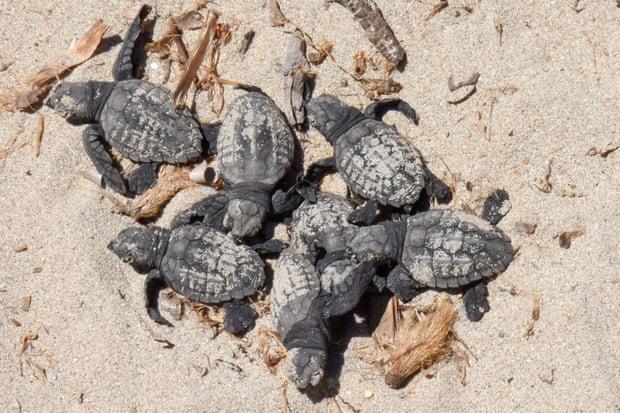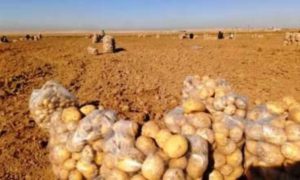Years of marine conservation work throughout the Mediterranean are starting to give dividends in Tunisia, with activists anticipating an additional increase in the number of sea turtles visiting the country’s beaches to build their nests this year, The Guardian reports .
Numerous of the circumstances that pushed sea turtles on to the world’s endangered list are still present and recommence to threaten the survival of the species. However, activists monitoring sea-turtle nests on Kuriat Island, a vital nesting ground, have reported an increase in nests from 11, when they first started monitoring in 1997, to more than 40 annually.
“Sea turtles are what we call a keystone species,” says Jamel Jrijer, a marine project manager at the WWF’s offices in Tunis. “That’s to say, they play a critical role in making the marine environment what it is.”
Of the three species of sea turtle – green, leatherback and loggerhead – that are encountered in Tunisian waters, it is only the loggerhead that nests here. It lays its eggs at just a tiny number of sites.
Heavy fishing – which often sees turtles trapped in lines and nets – plus the waste pumped from Gabes’s industrial heartland (estimated at about 13,000 tonnes of phosphate daily), had combined with plastics and other debris to push the Mediterranean’s loggerhead turtle population to the brink.
Undercutting it all are the twin threats of global heating and a cultural tradition that prizes turtle’s meat as a source of traditional medicine over their contribution to the health of the sea.
However NGOs, along with the Tunisian government, have pushed back, protecting the nesting grounds on Kuriat since 1997 and establishing the Sea Turtle Rescue Centre at the National Institute of Marine Sciences and Technologies in Monastir in 2004,adds the Guardian .
The agency cited Marine biologist Imed Jribi, he said,“When I first started work here in 1997 there were only 11 nests,” he says. “Now we are seeing between 40 and 45 nests every year.”
However, tourism still presents major problems. “We have too many people visiting Kuriat,” Jribi says. “We need smaller groups, which will allow us to manage them and protect the turtles’ nesting areas,” he says. Other problems can arise, he explains, for example with the hatchlings at Chebba, whose instinct to navigate to the sea by the moon is subverted by the cafes and roadside lights, which draw the baby turtles towards the lethal streets.
What's happening in Tunisia?
Subscribe to our Youtube channel for updates.

















































